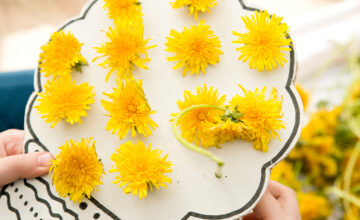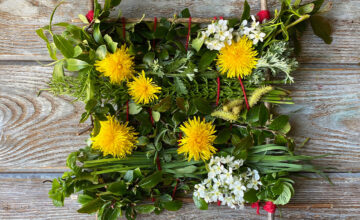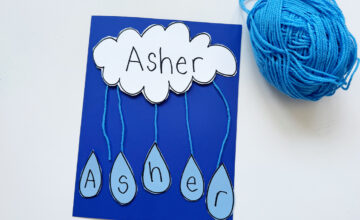Spring is the perfect time to hop into some fun crafting activities, and what better way to celebrate Easter than with a personalized Handprint Easter Bunny craft? This simple yet utterly adorable craft is not only a fantastic way to capture the size of your child’s hand at this age but also a creative opportunity to make a festive decoration. Using just a few materials, you and your little ones can create a bunny that’s as unique as they are. This craft not only adds a personal touch to your Easter decorations but also serves as a cherished keepsake for years to come.
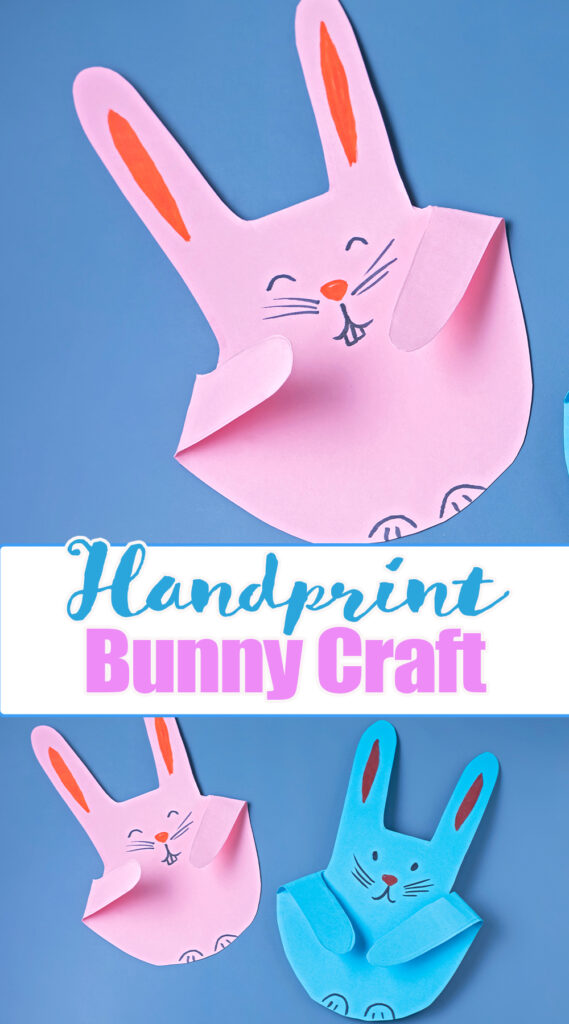
Materials:
- Pastel construction paper
- Pencil
- Thin black gel pen or marker, pencil crayons or markers for decorating
- Scissors
Step-by-Step Instructions for Handprint Bunny Craft:
- Trace the Handprint: On a piece of pastel construction paper, trace your child’s hand, making it slightly larger than their actual hand size for easier manipulation. Cut out the handprint making sure that between each finger there is a sharp cut rather than a rounded edge.

- Make a Slit: Carefully make a slight slit between the pinky and ring finger, enough so you can fold the pinky finger down to the same level as the thumb.

- Fold the Fingers: Fold the pinky and thumb fingers down to create the bunny’s paws. You want to fold the paws towards the center of the bunny so that they can touch.
- Cut Off the Middle Finger: Snip the middle finger off at the base, round it off so the head is even. This will leave you with the bunny’s ears (the remaining two fingers) and the body.
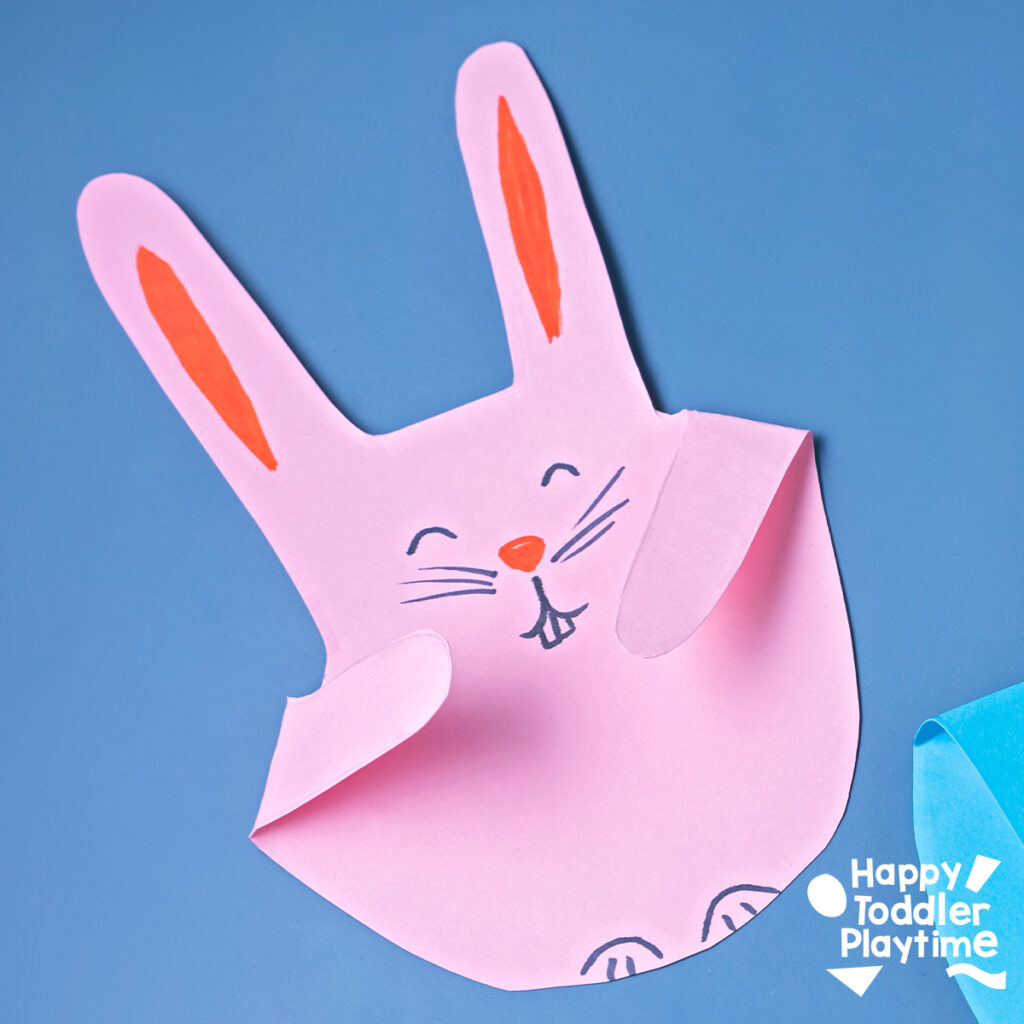
- Decorate Your Bunny: Use a black gel pen or thin marker to add eyes, whiskers, nose and a mouth to your bunny. Don’t forget to color in the ears and add little feet at the bottom of the palm.
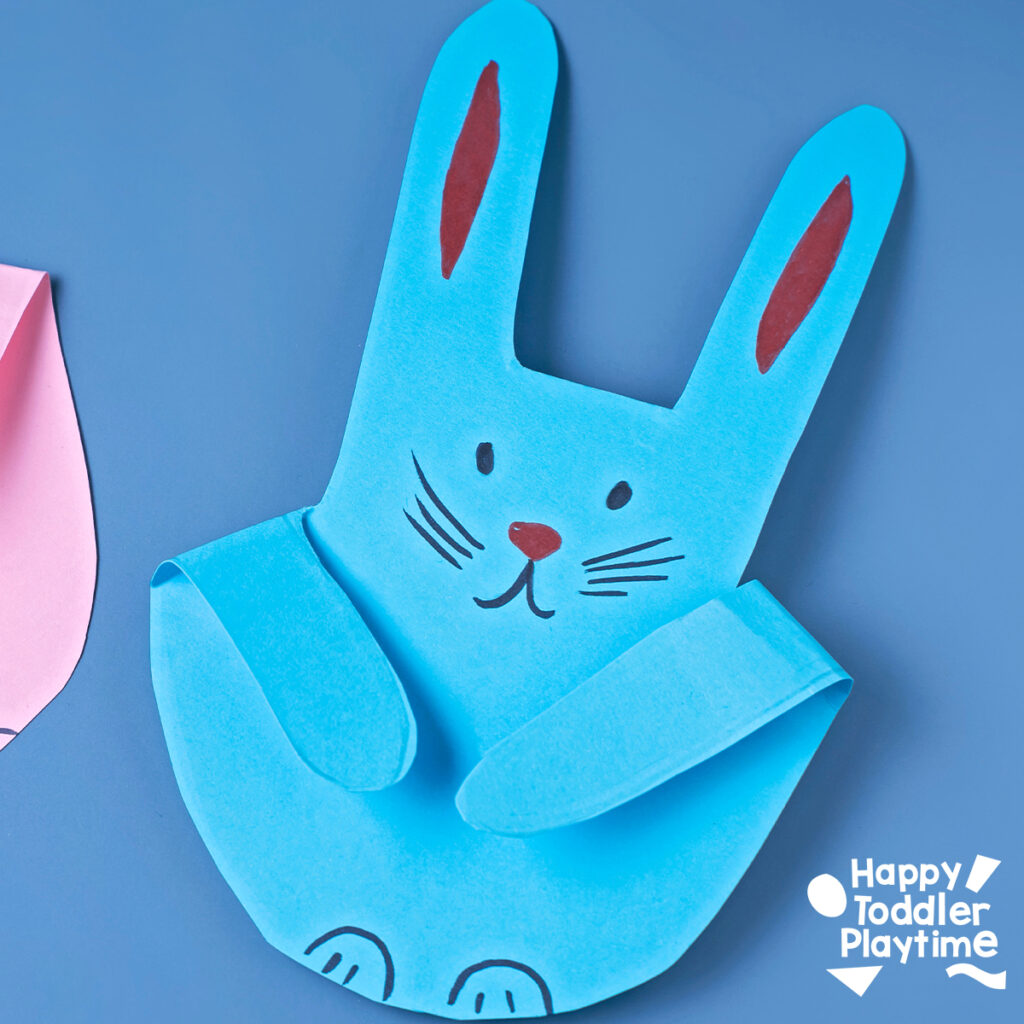
How They Played:
My kids were thrilled with the idea of turning their handprints into bunnies. They each chose their favorite pastel paper and eagerly traced their hands. The older one helped the younger twins with cutting, after which they all dived into decorating.
They added vibrant eyes, colorful whiskers, and even designed unique patterns on the bunny’s ears. After they were done, they played with their bunnies, creating little stories and scenarios where the bunnies explored gardens and had Easter adventures.
Tips for Success:
- Ensure that the scissors are child-friendly to prevent any mishaps during cutting.
- Guide younger children through the folding and cutting steps.
- Encourage your kids to personalize their bunnies with different colors and decorations to reflect their personalities.
Skills Learned:
- Fine Motor Skills: Tracing, cutting, and folding improve hand-eye coordination and dexterity.
- Creativity: Deciding how to decorate their bunnies allows children to express themselves artistically.
- Storytelling: Playing with their crafted bunnies encourages kids to use their imagination to create stories and scenarios.
- Emotional Development: Completing a project from start to finish boosts self-esteem and provides a tangible accomplishment.
The Handprint Easter Bunny craft is a fantastic way to engage your children in a creative activity that celebrates the spirit of Easter. Not only does it offer a fun crafting experience, but it also creates lasting memories and a special keepsake to treasure. So, why not make this craft a part of your Easter traditions and see what adorable creations your little ones can come up with?
Play2Learn Toddler & Preschool Programs for Curious Toddlers
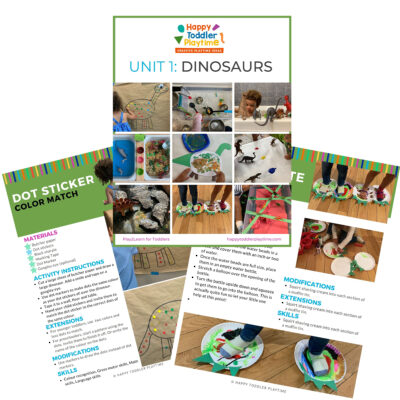
There is no limit to your toddler’s energy and curiosity. That energy and curiosity although a joy can be challenging at times. Their interest in just about everything around them is what makes them great learners. One and two year olds can soak up so much just from their senses!
But as a teacher or parent that thirst for learning can be exhausting. That is why I created this toddler and preschooler program. To help you get the most out of this time with your curious toddler without having to come up with creative ways to play and interact with them.
Play2Learn for Toddlers includes 20 Units for toddlers. Each 2-week toddler unit has 20 super easy to set up and engaging activities for toddlers 18 months to 3 years.
Play2Learn Preschool which includes 20 Units for preschoolers. Each 2-week preschoolers unit has 20 unique and easy to set up and engaging activities for preschoolers 3 years to 5 years. That’s over 800 learning activities for your toddler and preschooler at your fingertips! So many ideas you and your child will never be bored again!
These toddler and preschool lesson plans and activities will definitely keep you and your toddler and preschooler busy playing and learning!
Click here for more information: Play2Learn
Book: Exciting Sensory Bins for Curious Kids

Did you know I wrote a book of sensory bins? Click here for more information Exciting Sensory Bin for Curious Kids. Or grab your copy at Amazon.
Boring afternoons are made exciting with awesome animal-based bins, like Salty Shark Bay or Yarn Farm. Pretend play bins like Birthday Cake Sensory Play or Bubble Tea Party encourage creativity and imagination. And your kids will have so much fun they won’t even know they’re getting smarter with STEAM (science, technology, engineering, art and math) activities like Sink or Float Soup, Magnetic Letter Hunt or Ice Cream Scoop and Count.
Designed for toddlers 18 months and up.
Book: Super STEAM Activity Book for Kids
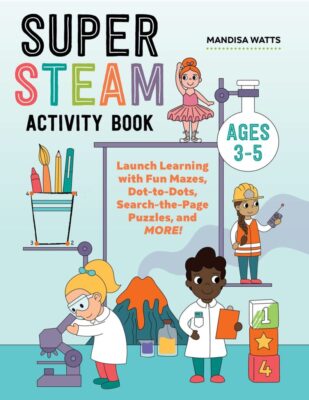
Learning all about science, technology, engineering, art, and math sets kids up for scholastic success―and it can be so much fun! Watch kids enjoy building STEAM skills as they color friendly fish, help water find its way to tree roots, solve math problems with mazes, and more.
Find out more and grab your copy here.
Designed for preschoolers 3 years old and up.
Book: Big Book of Riddles for Kids
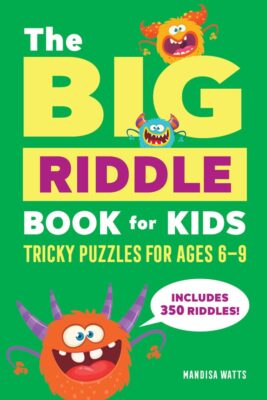
Riddle me this: What’s an exciting way to practice critical thinking while having a blast? The Big Riddle Book for Kids, of course! From hilarious puns to tough brain teasers, kids can build problem-solving skills with hundreds of riddles tha. t show them how to think outside the box.
- 350 riddles for kids—Have hours of fun with riddles, puns and jokes, and math and logic puzzles that’ll get their wheels turning!
- Level up their skills—Riddles get trickier as kids progress through the book, challenging them as they get better at solving puzzles!
- Double-check their work—Kids can check their answers in the back of the book with a handy answer key.
Help children expand their minds while having fun with this puzzle book for kids!
Designed for kids ages 6 years old and up.
TV Show: Curious Crafting
I’m so excited to share my crafting TV show Curious Crafting which launched in July 2022 on TVOkids and TVOkids YouTube! Season 2 aired in August 2023! My show was also nominated in 2023 for Best Live Action Preschool Series by the Youth Media Alliance Awards of Excellence.
Curious Crafting Season 1 is also now airing in Australia on ABC! Watch it here!
Set in the ultimate crafting space, Curious Crafting is a short form pre-school age series about the joy of making crafts. I lead a rotating cast of adorable little preschoolers (including my own) making magic out of common household objects.
In each episode we transform recycled items into magical crafts like a milk carton school bus, paper bag puppet or cotton pad turtle. The crafters learn and laugh their way through each activity while demonstrating what their young imaginations can create.
Curious Crafting shares the adventure and joy of making art with takeaway lessons for creating crafts at home.
This show designed for toddlers and preschoolers 2.5 years old and up.
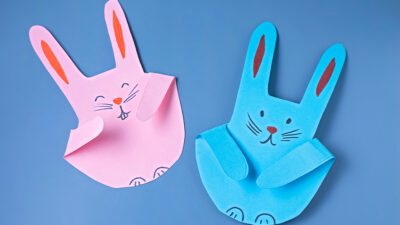
Handprint Bunny Craft
Materials
- Pastel construction paper
- Pencil, Pencil crayons or markers for decorating
- Scissors
Instructions
- Trace the Handprint: On a piece of pastel construction paper, trace your child's hand, making it slightly larger than their actual hand size for easier manipulation. Cut out the handprint making sure that between each finger there is a sharp cut rather than a rounded edge.
- Make a Slit: Carefully make a slight slit between the pinky and ring finger, enough so you can fold the pinky finger down to the same level as the thumb.
- Fold the Fingers: Fold the pinky and thumb fingers down to create the bunny's paws. You want to fold the paws towards the center of the bunny so that they can touch.
- Cut Off the Middle Finger: Snip the middle finger off at the base, round it off so the head is even. This will leave you with the bunny’s ears (the remaining two fingers) and the body.
- Decorate Your Bunny: Use a black gel pen or thin marker to add eyes, whiskers, nose and a mouth to your bunny. Don't forget to color in the ears and add little feet at the bottom of the palm.


